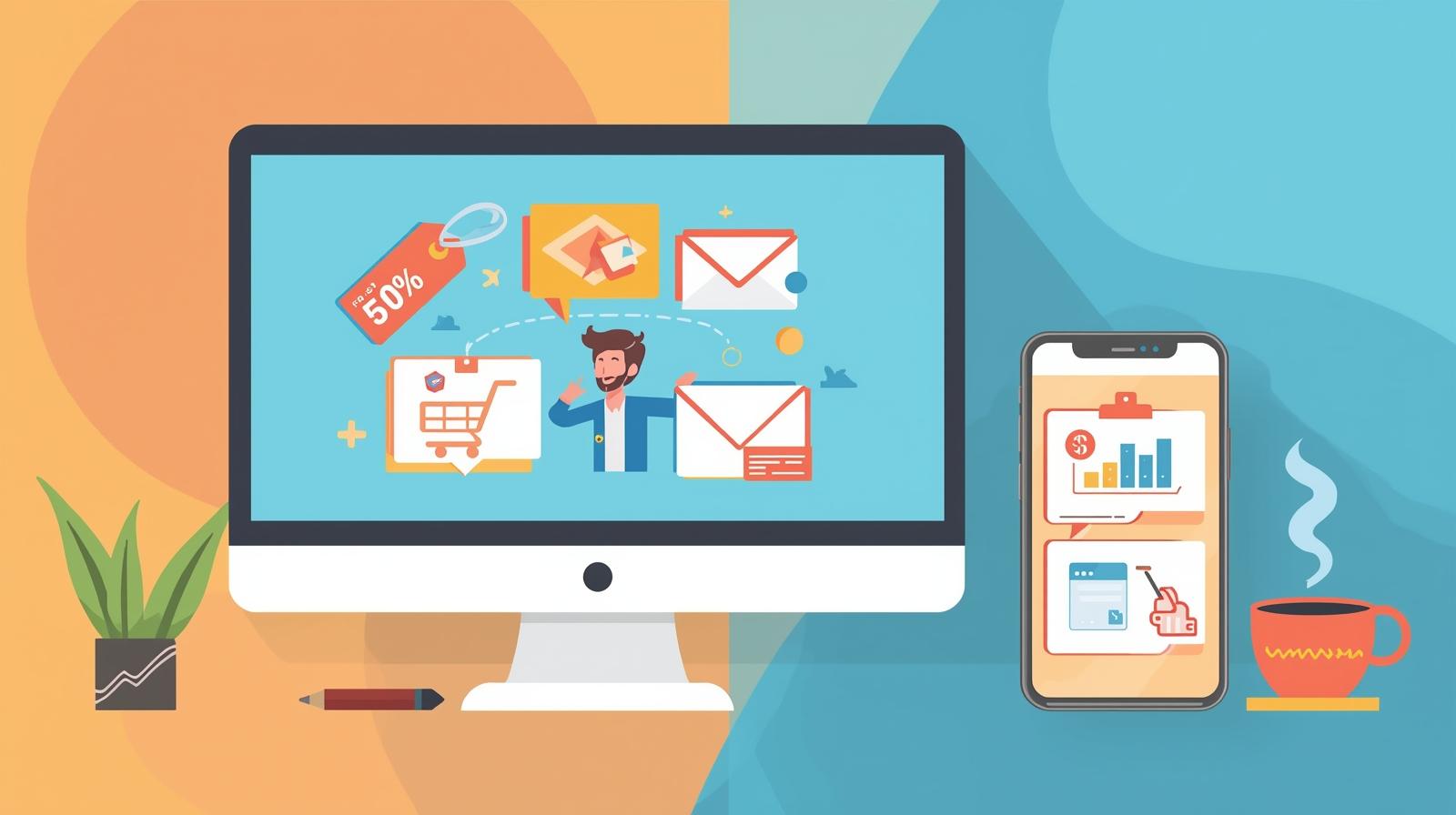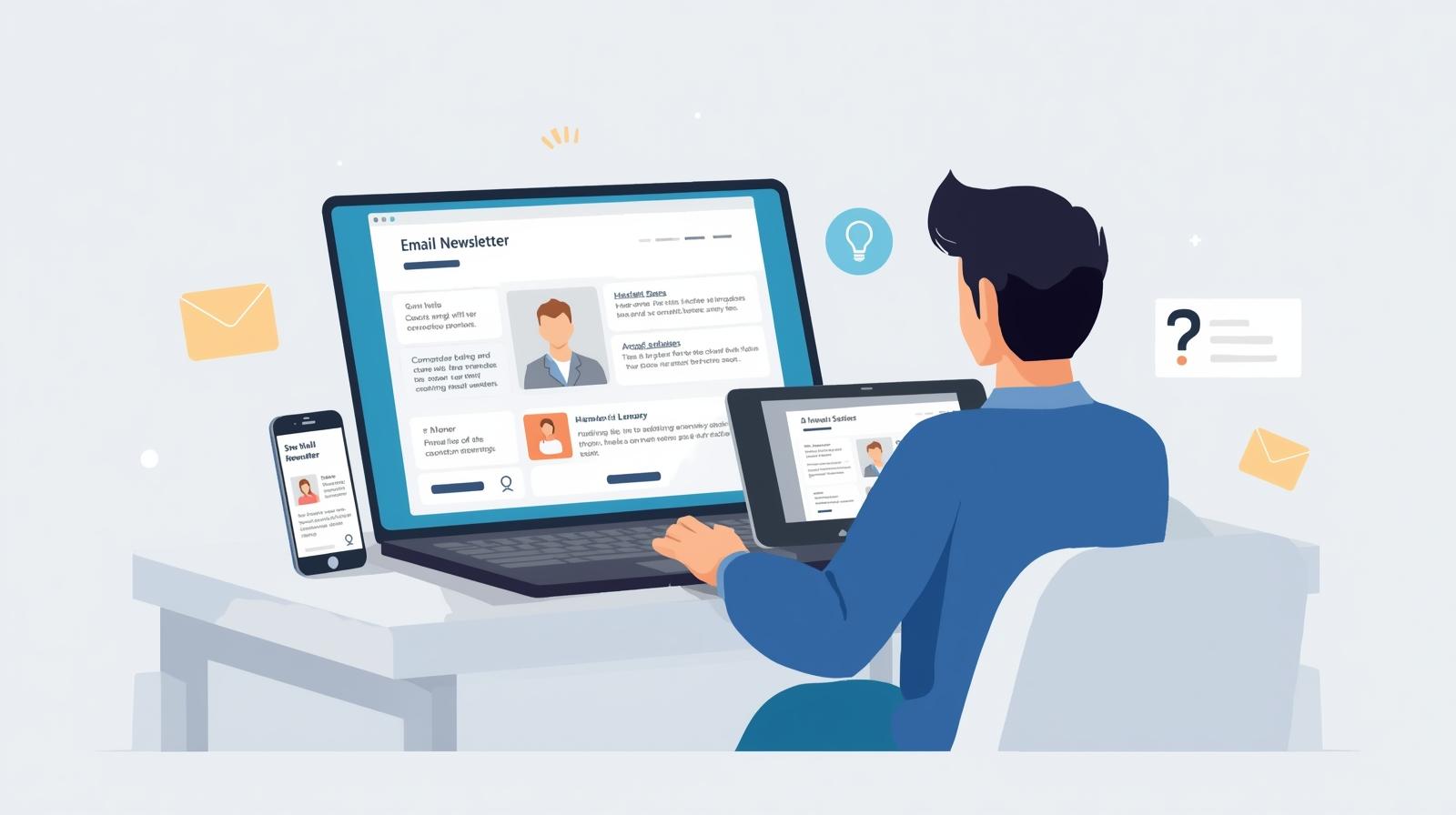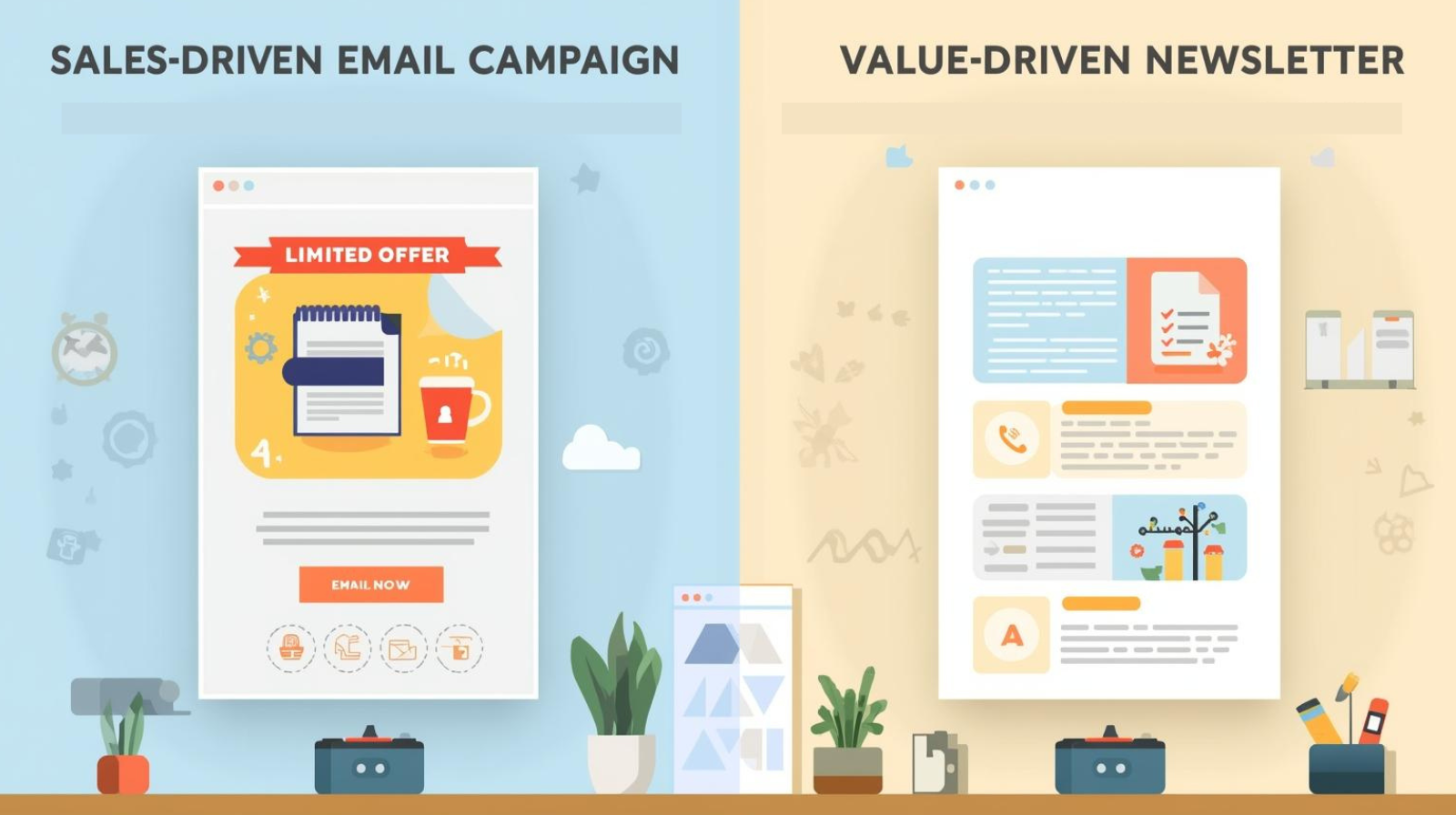In the world of digital marketing, one common question businesses ask is: “What’s the difference between email campaigns vs newsletters?” While both are powerful tools in an email marketing strategy, they serve distinct purposes.
Email campaigns are often designed to achieve a specific goal, such as promoting a new product, driving sales, or re-engaging inactive customers, whereas newsletters focus on building relationships by sharing valuable updates, insights, or curated content on a regular basis.
Understanding the difference between email campaigns vs newsletters is essential if you want to engage your audience effectively and maximize results. For a deeper dive into email marketing fundamentals, check out HubSpot’s guide.
In this guide, we’ll break down how each works, when to use them, and best practices to ensure you’re making the most of your email marketing efforts.
What Are Email Campaigns and How Do They Work?
An email campaign is a targeted series of emails designed to achieve a specific objective within an overall email marketing strategy.
Unlike newsletters, which focus on regular updates and nurturing long-term relationships, email campaigns are usually time-bound and goal-driven. This is one of the primary distinctions you’ll notice when comparing email campaigns vs newsletters.
Typical goals of email campaigns often include driving product sales, promoting special offers, announcing new product launches, or re-engaging subscribers who have become inactive.
For example, a retail brand may send a limited-time discount campaign to increase conversions, while a SaaS company might use a campaign to encourage free trial users to upgrade to a paid plan.
There are several types of email campaigns businesses can leverage, each serving a different purpose:
-
Promotional campaigns: Designed to highlight discounts, seasonal offers, or exclusive deals.
-
Abandoned cart campaigns: Triggered when a customer leaves items in their cart without completing the purchase.
-
Welcome sequences: A series of introductory emails sent to new subscribers to build trust and set expectations.
-
Re-engagement campaigns: Targeted at inactive subscribers to bring them back into the fold with personalized offers or reminders.
The benefits of using email campaigns are significant. They allow businesses to connect with highly segmented audiences, deliver personalized messages, and achieve measurable outcomes such as higher open rates, improved click-through rates, and increased revenue.
To get started, consider using a reliable email marketing service that helps you design, schedule, and track campaigns efficiently. More importantly, they provide an opportunity to guide subscribers through different stages of the customer journey, from awareness to conversion.
When used effectively, email campaigns become one of the most powerful tools for achieving short-term marketing goals while supporting broader business objectives.

Understanding Newsletters: Purpose and Content
An email newsletter is different from a campaign because its purpose is not tied to a single promotion or immediate sales push.
Instead, newsletters are designed to deliver consistent value by sharing information, updates, or insights that keep subscribers connected to a brand over time. While email campaigns are often short-term and goal-focused, newsletters emphasize continuity and relationship building.
The typical content of an email newsletter can vary depending on the business and its audience. Many companies use newsletters to share company news, product updates, educational articles, curated industry insights, or helpful tips.
Others incorporate customer success stories, event announcements, or blog recaps. The goal is to keep content informative, engaging, and worth opening each time it lands in the inbox.
One of the key strengths of newsletters lies in their role in building relationships and brand authority. By consistently offering value rather than just promotional messages, businesses position themselves as trusted resources.
Over time, this nurtures loyalty, strengthens credibility, and keeps the brand top of mind when subscribers are ready to take action.
Businesses also experiment with different newsletter formats to match their goals. Some send a weekly digest that includes highlights of recent blog posts or news updates.
Others create themed newsletters centered around specific topics, such as fashion tips, productivity hacks, or health advice. Many brands adopt a personalized newsletter format, tailoring recommendations and content based on subscriber preferences.
In short, newsletters serve as a long-term strategy to engage audiences, share knowledge, and reinforce brand identity.
When compared with email campaigns vs newsletters, this format plays a unique role by focusing less on direct sales and more on sustained engagement and value creation.

Email Campaigns vs Newsletters: Core Differences
Understanding email campaigns vs newsletters helps you plan your email marketing strategy effectively. While both are essential, they serve very different purposes.
By knowing their distinctions, you can use each tool strategically to achieve both short-term results and long-term engagement.
Purpose
Email campaigns focus on driving specific actions. They are highly goal-oriented and often aim to:
-
Generate product sales
-
Encourage event registrations
-
Drive sign-ups for free trials or premium services
-
Prompt immediate engagement, like clicking a promotional link
For example, an online store might launch a flash sale campaign to clear out seasonal stock. Every email in the campaign is designed to motivate subscribers to purchase quickly.
In contrast, newsletters focus on long-term engagement. Their purpose is to keep subscribers informed, build trust, and nurture relationships. Newsletters do not push immediate sales. Instead, they:
-
Provide useful tips or insights
-
Share company updates or stories
-
Highlight educational content or curated articles
A SaaS company, for instance, might send a weekly newsletter with industry insights, product tips, and success stories, keeping subscribers informed and engaged without asking for instant action.
Frequency
Frequency distinguishes campaigns and newsletters significantly.
-
Email campaigns are sent sporadically or triggered by specific actions, such as:
-
Abandoned shopping carts
-
Special promotions or seasonal events
-
Product launches or announcements
-
Campaigns happen only when there is a clear objective, which ensures each message feels relevant and timely.
-
Newsletters, on the other hand, follow a consistent schedule. They can be sent weekly, bi-weekly, or monthly. This regularity creates subscriber expectations, making recipients more likely to open your emails because they know when to expect them. Consistency in newsletters helps reinforce your brand presence and build trust over time.
Content Style
Content in campaigns and newsletters differs in purpose and presentation.
-
Email campaigns deliver concise, focused messaging. They usually highlight a single offer, promotion, or event. Every element, from the subject line to the call-to-action button, drives the reader toward the desired action. Visuals, buttons, and clear messaging work together to boost engagement and conversions.
-
Newsletters offer varied content, often combining updates, tips, curated articles, and behind-the-scenes insights. The goal is informative and educational rather than purely promotional. Newsletters encourage subscribers to read, engage, and spend time with your content, which builds brand loyalty and credibility.
For example, a health and wellness brand might include:
-
A short tip about healthy habits
-
A link to a blog post on nutrition
-
Upcoming event announcements
-
A featured customer story
By mixing content types, newsletters maintain subscriber interest and create a stronger connection than a single-purpose campaign.
Audience Targeting
Targeting also differs for campaigns and newsletters:
-
Email campaigns are highly segmented. Marketers send campaigns to groups most likely to respond. For example, a software company may target only users on older subscription plans with an upgrade promotion. This personalization increases conversion rates and ensures relevant content reaches the right audience.
-
Newsletters usually target a broader audience, such as your entire subscriber list. They aim to maintain ongoing communication with all subscribers, ensuring everyone stays informed and engaged. Broader targeting allows newsletters to focus on building trust and credibility over time rather than pushing immediate action.
Measurable Outcomes
Email campaigns and newsletters differ in how success is measured:
-
Email campaigns track short-term performance metrics like:
-
Open rates
-
Click-through rates
-
Conversions and purchases
-
ROI for a specific promotion
-
Campaigns deliver tangible, immediate results, which makes them ideal for measuring the effectiveness of a marketing initiative.
-
Newsletters measure long-term engagement and brand impact, such as:
-
Subscriber loyalty
-
Engagement over time
-
Website traffic generated from content links
-
Brand awareness and authority
-
While newsletters can drive clicks and traffic, their main value lies in nurturing relationships and keeping your audience connected to your brand.

When to Use Email Campaigns vs Newsletters
-
Use email campaigns to:
-
Promote offers, discounts, or product launches
-
Re-engage inactive subscribers
-
Drive traffic to landing pages, webinars, or events
-
-
Use newsletters to:
-
Maintain consistent communication with your audience
-
Build trust and authority over time
-
Share educational content or curated insights
-
Using both strategically allows businesses to maximize conversions and maintain lasting subscriber engagement, creating a balanced, results-driven email marketing strategy.
Best Practices for Both Email Campaigns and Newsletters
-
Write clear, compelling subject lines to improve open rates
-
Segment your audience for relevant content delivery
-
Personalize emails to increase engagement and connection
-
Maintain consistent sending frequency without overwhelming subscribers
-
Analyze performance metrics like open rates, CTR, and conversions to refine your strategy
Following these practices ensures your campaigns and newsletters deliver results and provide value consistently.
Email Campaigns vs Newsletters: Conclusion
Both email campaigns and newsletters play crucial roles in email marketing. Campaigns drive short-term objectives like sales, sign-ups, or event attendance. Newsletters nurture long-term engagement, build trust, and establish authority.
Understanding email campaigns vs newsletters allows businesses to craft a balanced strategy that maximizes conversions and strengthens customer relationships.


